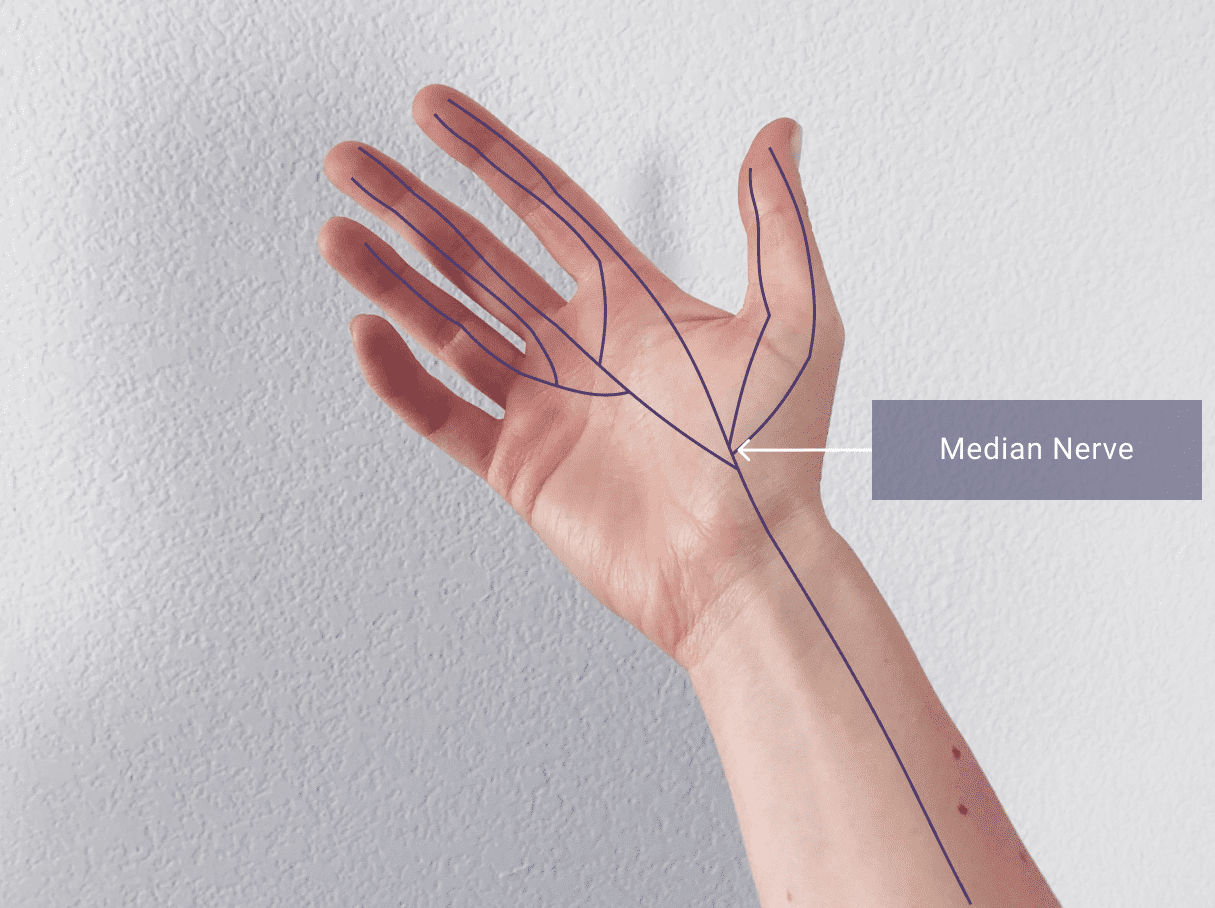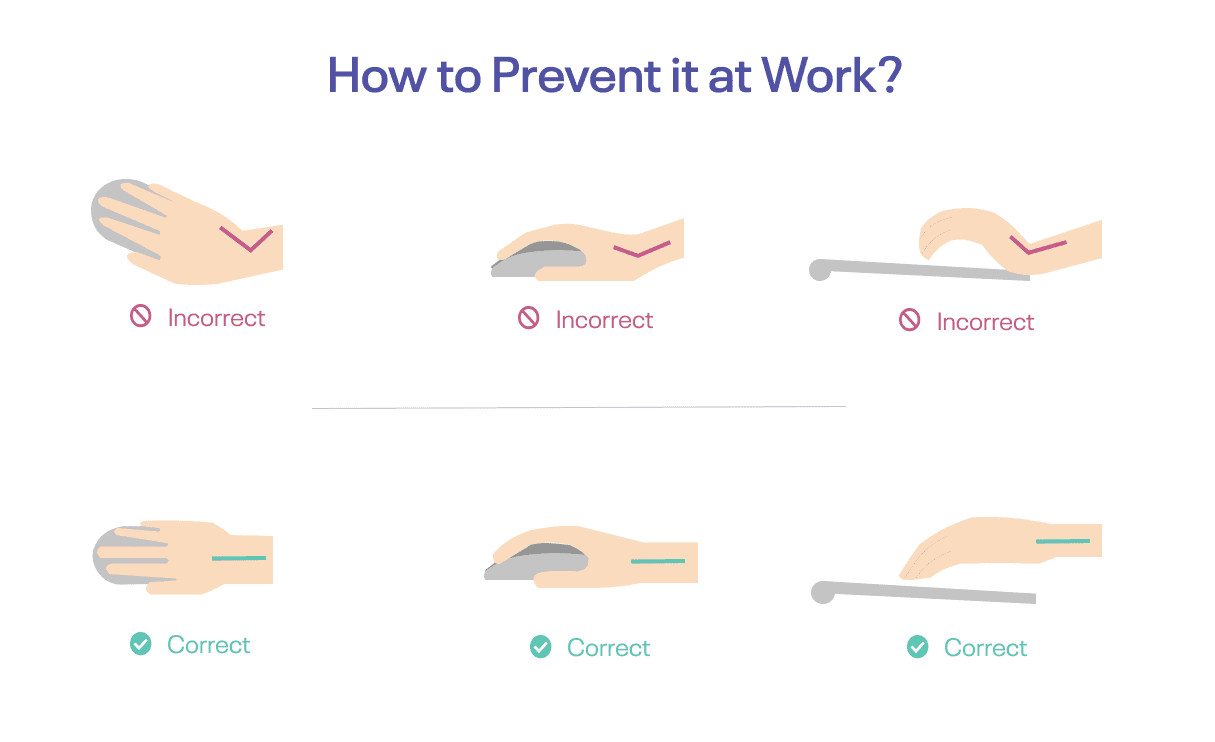What's Causing Carpal Tunnel Syndrome and How to Prevent It.
Tingling, numbness, pain in your fingers, and arms.
Do you wake up in the middle of the night to find out your arm is sound asleep, or as we call it in polish, „the ants are crawling down your arm”?
These could be the first signs of carpal tunnel syndrome.
IIn this article, I want to explain what carpal tunnel syndrome is, how and why it starts, and how to deal with it before it is too late.
What Is a Carpal Tunnel Syndrome?
Carpal tunnel syndrome is a condition when a narrowing of your carpal tunnel that leads to compression of the median nerve. One thing to know about this tunnel is that it is a rigid and narrow one. Any inflammation or swelling can put stress on your median nerve that runs through this passage.
What Is the Median Nerve, and Why Is It Important?
Just like every nerve in our body, it helps you to sense and move the muscles. This nerve is the main nerve of the front of your forearm. It provides sensation to the thumb, index finger, middle finger as well as part of your ring finger.
Who Is in the Risk Group for Carpal Tunnel Syndrome?
-
Certain pre-existing conditions can attribute to carpal tunnel syndrome, e.g.:
- Diabetes
- Pregnancy
- Arthritis
- Wrist injuries
- Kyphotic posture
- High blood pressure
- Women are 3 times more likely than men to develop carpal tunnel syndrome.
-
Repetitive wrist movement at your job:
- Desk jobs
- Manufacturing
- Construction work
- Assembly line
- Massage therapists
- Hairdressers and beauticians
What Are the Symptoms of Carpal Tunnel Syndrome
Carpal tunnel syndrome likes to sneak up on you slowly. The earlier you detect it, the higher the chances of recovery and avoiding unpleasant and painful consequences.
The First Symptoms
- Tingling sensations in your arm in the middle of the night or upon awakening
- Pain in your arm, especially while holding things
More Advanced Stages
- Weakness in your thumb and 1st two fingers
- Sensation problems- troubles distinguishing hot/cold temperatures
When It’s Too Late
- Constant pain radiating up the arm
- Muscle atrophy (thenar muscles) on the thumbs side that looks like a little dimple (not as innocent as it sounds)
Stop It Before It’s Too Late!
The sooner you notice and react to the symptoms in your body, the more likely are to prevent the quite unpleasant surgery and, in some cases, irreversible strength and sensation loss.
Doctor Warning!
If you’re experiencing the symptoms mentioned above, it is best to go to your doctor who can perform appropriate tests. The commonly performed tests are:
For the recovery period, doctors often recommend immobilization. Resting your wrist and wearing a brace are some of the strategies to help ease the inflammation in the carpal tunnel. In some cases, mild anti-inflammatory medications are prescribed, and in some more unpleasant steroid injections.
How to Prevent Carpal Tunnel Syndrome
While you still can: move it and improve it! It applies to all of us spending time in front of keyboards or straining the wrists in other ways.
Here are a few steps to take for self-care to prevent the carpal tunnel syndrome:
-
Stretch it
Stretching and opening your chest is a very important practice to avoid carpal tunnel syndrome.
If your shoulders are rounded forward, your pectoralis muscles are sitting tight, which could lead to median nerve' impingement. Here is a recommend stretch for the tight pecs.
Read more about helpful stretches to relieve your carpal tunnel. (Carpal tunnel relief. Stretches to set you free.)
-
Floss the Nerves
Flossing your median nerve can alleviate the tension caused by compression on its pathway. Nerve flossing, if done correctly and regularly, can help you reduce the existing pain, as well as regain the lost mobility in the affected area.
This is a simple median nerve floss to do daily. Make sure you move dynamically through the movement, don’t hold one position for too long (no more than 1 second) and don’t overdo it (no more than 5-8 reps)!
Curious about nerve flossing? Read more in my article: (What is nerve flossing and how to ease carpal tunnel, cubital tunnel, or radial tunnel in a 10-minute routine.)
-
Improve Your Posture
Your posture is a significant factor contributing to the health of your carpal tunnel. Make sure your shoulders are back, and your head sits on top of your spine. Craning your neck puts tremendous tension on the upper back structure and can lead to nerve compression and inflammation.
Here is an article to read if you want to find out more about the correct head position when in front of the screens: 5 Steps to a Quick Posture Fix for Neck Pain and Headache
-
Optimize Your Workstation
An ergonomic workstation is key if you spend hours in front of the desk. Adjust your wrist on the keyboard or mouse for the most optimal position to prevent carpal tunnel syndrome.
Learn how to adjust your desk set up to improve your posture and prevent the aches: How to Improve Your Posture at Work and Relieve the Aches.
-
Take Breaks
Most importantly, remember to take breaks for your wrists. Set up a reminder to do a short daily workout with Relevel App to improve workplace wellbeing.
Happy healing!



